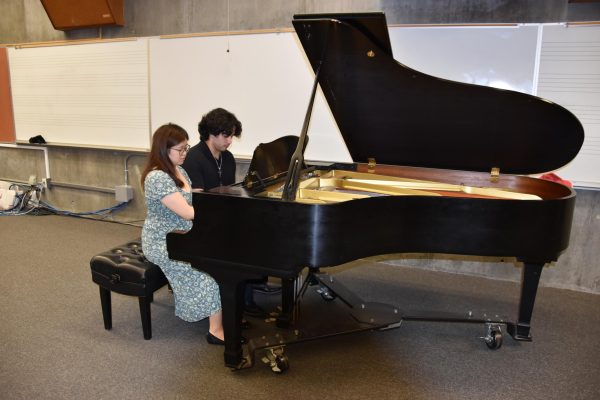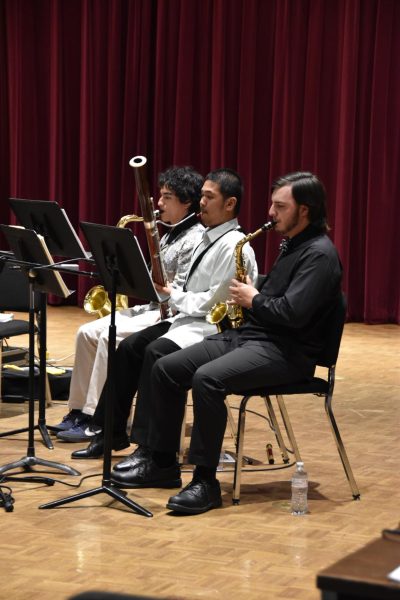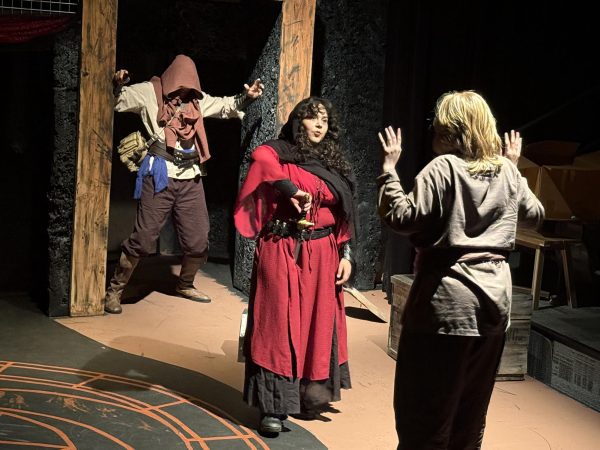Holy day honors loved ones
One of the biggest holidays in Mexico, Día de los Muertos or “Day of the Dead” is set for Saturday November 2. Celebrated annually, Día de los Muertos is a Mexican religious holiday that focuses on the gathering of friends and family to pray for, honor and remember their friends, family members and loved ones who have died.
“Día de los Muertos is a folk tradition reflecting the folkways and folklore of Mexico and the identity of its people,” said Puente Coordinator Elizabeth Abril. “At the core, Día de los Muertos traditions and rituals retain the primary mission of honoring, remembering and celebrating the life of all those who have come before us; as well as giving hope to our own inevitable mortality.”
Celebrated throughout Mexico and around the world every year, Día de los Muertos celebrations are becoming increasingly popular not only in the United States, but in other parts of the world.
“Dia de los Muertos is similar to our upcoming Veterans Day on November 11 where we celebrate and honor America’s Veterans for their patriotism, love of country and willingness to serve and sacrifice for the common good,” said Abril. “It is also closely related to the Catholic holiday, All Saints Day and All Soul’s Day.”
According to history, the origin of Día de los Muertos are distinctly Mexican, as during the time of the Aztecs 3,000 years ago, a month long summer celebration overseen by the goddess Mictecacihuatl, the Lady of the Dead, honored those who had died and welcomed their spirits back to earth for a visit.
“Legend says that the ‘gates of heaven open at midnight and that the souls of dead children ‘angelitos’ are the first to visit their loved ones still on earth’,” said Abril. “They roam the earth for just one day and then the following midnight, the gates are opened once again to allow the adult souls to descend”.
While specifics of the celebration vary with certain regions, one of the most common customs of Día de los Muertos is the construction of elaborate altars, known as ‘ofrendas’ or offerings, to welcome departed spirits home. Vigils are held and families often visit cemeteries to fix up the graves of their departed relatives. In addition, strong potent smells such as marigold flowers, spices, incense and scented candles are often also part of the altars, as are pictures of the deceased, portions of their favorite foods and drink, toys for the angelitos (little angels) and other personal items are displayed on the altar table in honor of those who have passed.
According to Silvia Jimenez, who has participated in many Dia de Los Muertos ceremonies, many different types of foods are also prepared during this ceremony in honor of their loved ones.
“Some of the foods are Pan de Muertos (“Bread of the Dead”) which is a sweet bread that has rolls of dough on top to resemble a skull and bones,” said Jimenez. “They also have a drink called ‘atole’; a corn based drink that chocolate is often added in, and a drink called ‘ponche’; a fruit punch with cinnamon and cloves. Another big tradition is ‘casuelitas,’ a little dish of small or medium bowls made of clay where they make sugar food made to resemble real Mexican dishes like tacos or enchiladas.”
In celebration and commemorate of this event, the Puente Students of Los Medanos College have built an altar, located in the English department. In addition, the Puente students have also decorated a display showcase located in the library. Puente Coordinator Elizabeth Abril is inviting students and staff to visit one or both of these showcases to not only honor those who have passed on, but to observe and enjoy the creativity the Puente students have put into these displays. Students, faculty, and staff are encouraged to visit the altar commemorating Dia de los Muertos in English Department.
“The altars consist of many items that are well considered with the dead loved ones in mind,” said Abril. “If it’s your first time viewing an altar, you’ll notice a common theme; the sugar skull. The display of skulls has great meaning; symbolizing life, death and rebirth. Therefore it is extremely significant in celebrating Dia de Los Muertos.”






